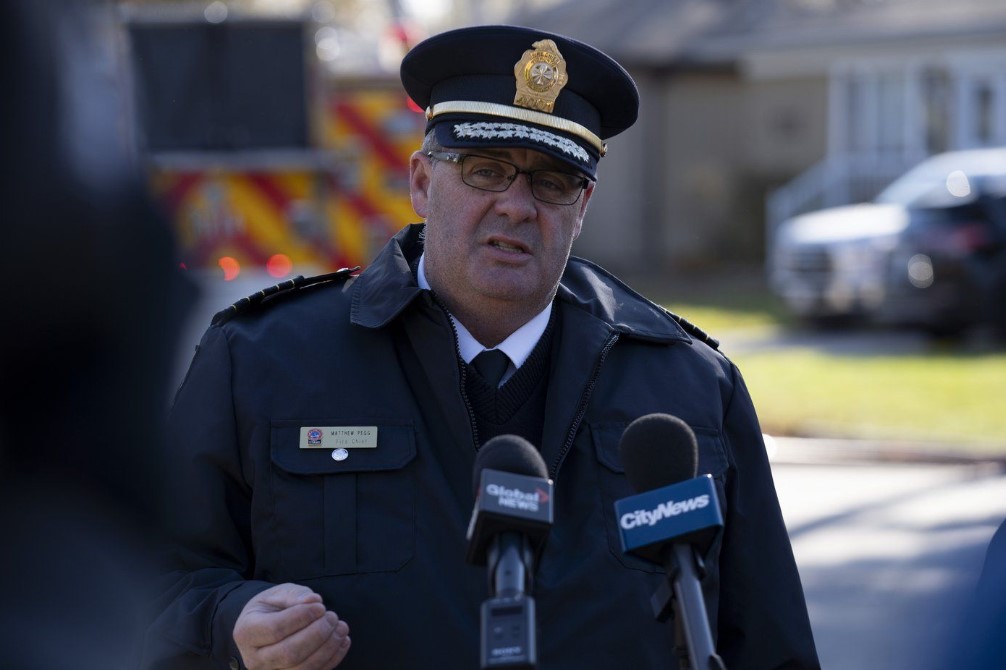Simcoe-Muskoka District, Thunder Bay PHUs moving to “Grey-Lockdown” on March 1st

Posted February 26, 2021 2:40 pm.
Last Updated February 26, 2021 10:49 pm.
Ontario’s government has invoked its emergency brake and has opted to move Simcoe-Muskoka and Thunder Bay’s public health units into “Grey-Lockdown.”
The following public health units will move to the province’s colour-tiered framework as of Monday, March 1st.
Grey-Lockdown
- Simcoe-Muskoka District Health Unit
- Thunder Bay District Health Unit
Red-Control
- Niagara Region Public Health
Orange-Restrict
- Chatham-Kent Public Health
- Middlesex-London Health Unit
- Southwestern Public Health
Yellow-Protect
- Haldimand-Norfolk Health Unit
- Huron Perth Public Health
Green-Prevent
- Grey Bruce Health Unit.
The Ford government says the decision was made in consultation with the local medical officers of health and is based on the trends in public health indicators and local context and conditions.
Niagara Region’s PHU, which was previously in “Grey-Lockdown,” will transition over to “Red-Control.”
In Peel Region, Toronto, and North Bay Parry Sound District, the lockdown measures and “Stay-at-Home” order will continue to apply until at least Monday, March 8th.
The province says final decisions will be made based on key public health indicators and consultation with the local medical officers of health.
“While we continue to see the number of cases and other public health indicators lowering in many regions across the province, the recent modelling shows us that we must be nimble and put in place additional measures to protect Ontarians and stop the spread of COVID-19,” said Christine Elliott, Minister of Health.
“With COVID-19 variants continuing to spread in our communities, it is critically important that everyone continues strictly adhering to all public health and workplace safety measures to help contain the virus and maintain the progress we have made to date.”
RELATED: Ford government considering changes to COVID-19 restrictions in some regions
The province says the decision to enforce the emergency brake is due to a rapid worsening in key public health indicators, as well as a high presence of variants in the Simcoe-Muskoka District Health Unit that continue to increase – the highest in the province.
As of February 23rd, there has been a total of 170 confirmed cases of a variant of concern in the region.
Community leaders in Thunder Bay have recently called on all levels of government to take action on the worrying spread of COVID-19 in the city that’s a travel hub for northwestern Ontario.
Fort William First Nation Chief Peter Collins and Nishnawbe Aski Nation Grand Chief Alvin Fiddler are requesting support as they say cases among vulnerable populations have overwhelmed local resources.
Outbreaks have been declared at correctional facilities, among the homeless population in Thunder Bay, and at a number of local schools.
In a joint statement issued Thursday, the chiefs pointed to inadequate resources for people released from correctional facilities who are being sent to isolate in Sioux Lookout, Thunder Bay, and Timmins hotels.
“Thunder Bay is in a precarious situation, and there is growing concern as government ministries, health organizations and health units struggle to contain the spread of this virus,” Fiddler said.
“Moving back to lockdown across northwestern Ontario will be painful, but is necessary as COVID-19 cases continue to rise.”
The government moved the Thunder Bay region to the second-strictest “red” category of its pandemic restrictions system two weeks ago when it lifted a stay-at-home order for much of the province.
Data has shown the stay-home order and other strict measures brought down cases and hospitalizations after they were imposed in January, but those numbers have since started to trend upwards again.
Ontario’s top doctor said Thursday he has recommended a lockdown for Thunder Bay to stop the virus from spreading into northern Indigenous communities with few health-care resources.
Thunder Bay Mayor Bill Mauro said Friday he’d be surprised if the province did not impose a lockdown based on the steady rate of case growth.
“We’re in a difficult spot right now, for sure,” he said in a telephone interview.

He said the city has reported more cases in February than throughout all of 2020. There were 349 cases active in the city of more than 121,000 on Friday, according to the local health unit.
“Clearly there is a situation here that we don’t see ending in the near term,” Mauro said of the trend.
Thunder Bay’s PHU has also seen an increase in percent positivity and currently has a slightly higher reproductive number (1.36) than Toronto (1.1).
The mayor has been calling on the provincial and federal governments to provide financial and human-resources assistance in health-care. He said the city does not have resources to meet the needs of its COVID-19 isolation centre, which’s on the “verge of failing.”
RELATED: York Region to begin booking vaccinations as early as Monday for residents 80+
On Thursday, Thunder Bay’s medical officer of health recommended all schools move to virtual learning next week after a number of outbreaks in schools. At least two school boards have indicated they plan to follow her advice.
Effective Monday March 1, 2021, the TBDHU region will be placed in #GreyZone of the Provincial Framework. #TBay
Read the full media release: https://t.co/1j8rlFLspy pic.twitter.com/QL4V9iwwuw
— TBay Public Health (@TBDHealthUnit) February 26, 2021
Meanwhile, one northwestern Ontario First Nation declared a state of emergency after several members living off-reserve in Thunder Bay tested positive for COVID-19.
Neskantaga First Nation Chief Chris Moonias said at least 12 members had tested positive for COVID-19 as of Wednesday and one person was in intensive care.
He has called for assistance from Ottawa to fund emergency housing for the homeless population and for citizens of his First Nation to be immunized against COVID-19.
Restrictions will also loosen in Chatham-Kent; Middlesex-London; Southwestern; Haldimand-Norfolk; Huron Perth; and Grey Bruce health units on Monday.
With files from The Canadian Press










